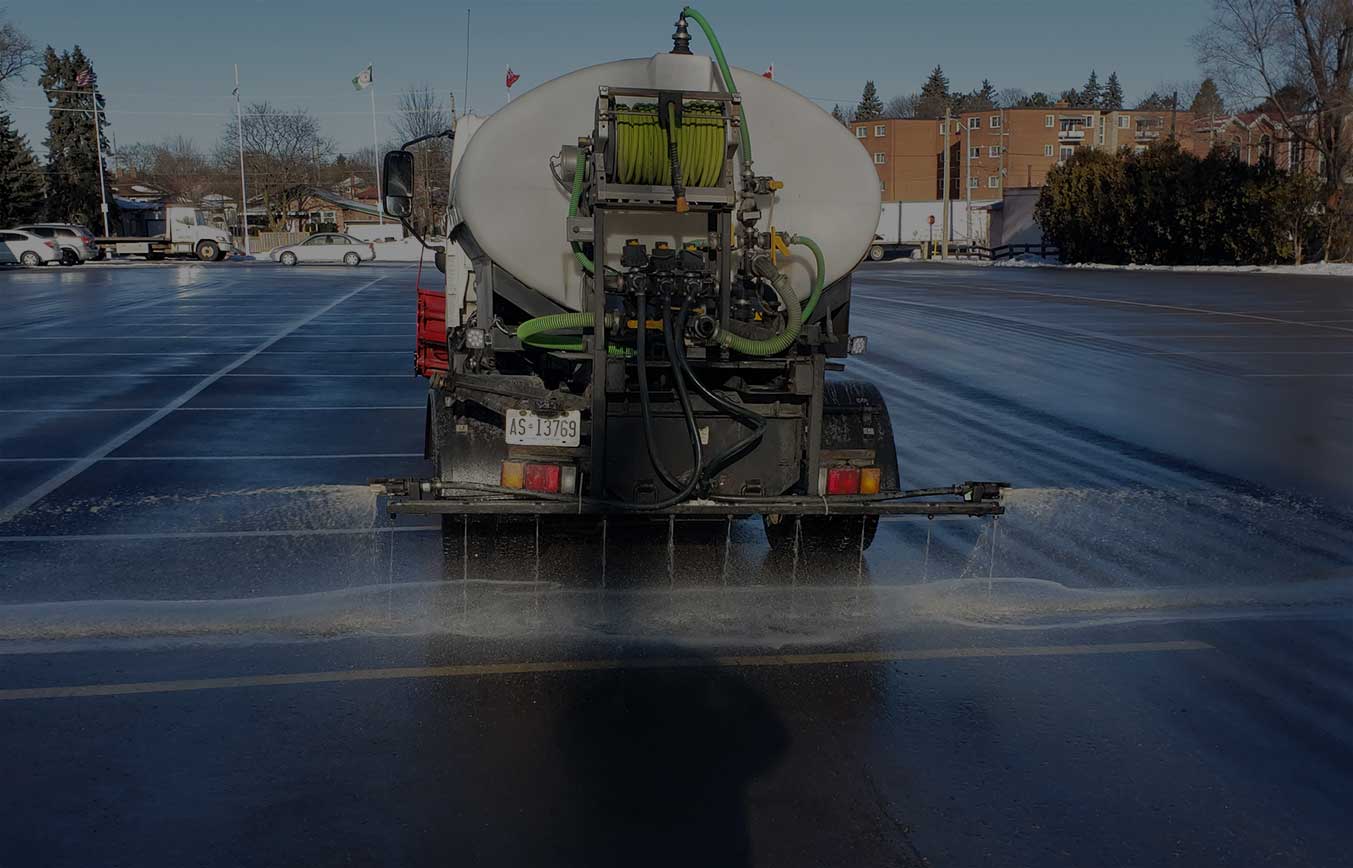Why Liquids
-
A liquid de-icer is nothing other than a dry, solid de-icer (like rock salt or calcium chloride pills or magnesium chloride flakes) that had been dissolved in water to make a solution.
-
Most common liquid de-icer is Salt Brine – it is 23.3% salt solution that has a freeze point of -21
-
23% Salt Brine is 1KG of salt dissolved in 4L of water
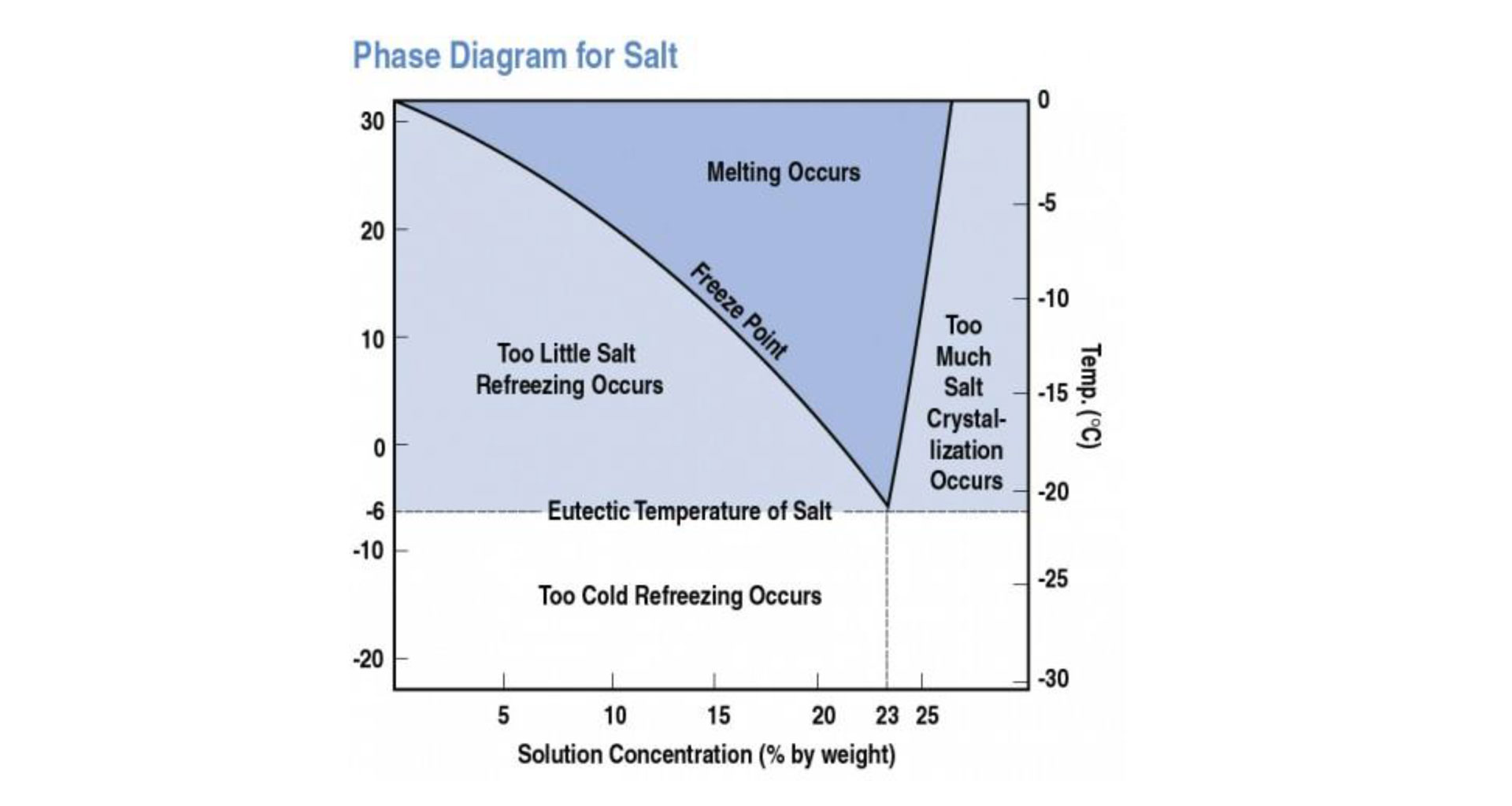
Salt Brine as a Liquid Deicer
-
Salt Brine Alone cannot meet all the melting demands that are required in winter conditions.
-
Salt brine must be blended with additives to create a liquid deicer that can handle all the varying ice control situations.
-
Additives change the freeze point and melting capacity of the salt brine to increase effectiveness.

Additives for Liquid Deicing
-
Common brines to blend with salt brine are
– Calcium chloride
– Magnesium Chloride
– Carbohydrate deicers – organic based salts and sugars – comonly known as Sugar Beet Juice
Blending Guidelines CaCl.
-
Salt Brine Blending to optimize Deicing and Anti-Icing Performance, Minnesota State University
-
Performance Rating of De-icing Chemicals for Winter Operations, Barbara M. Gerbino-Bevins
-
SM Hossain (2015). Optimum Deicing and Anti-icing for Snow and Ice Control of Parking Lots and Sidewalks.
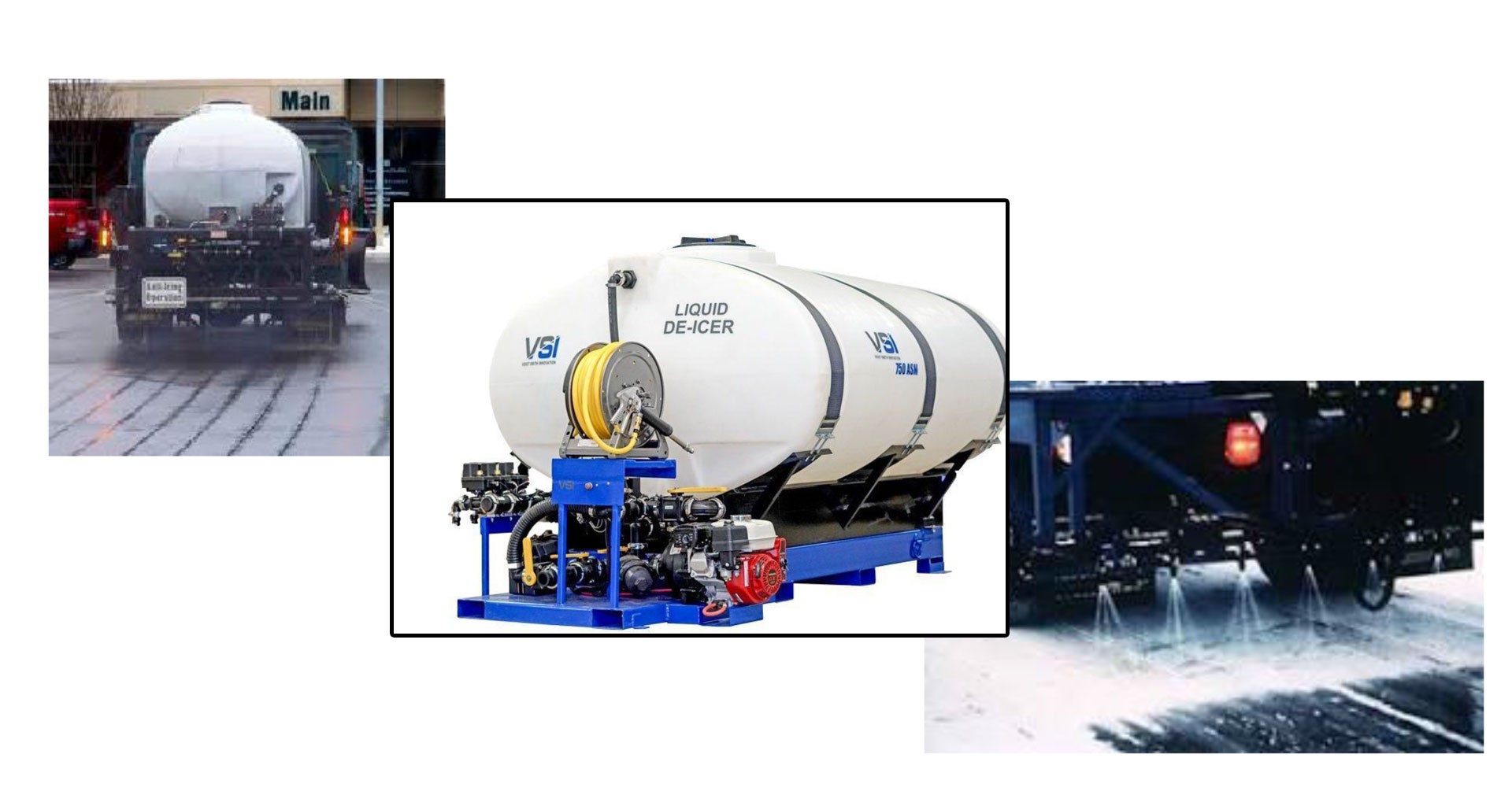
Application of Liquid Deicer
-
Much like ant-icing is done through the use of truck mounted spray bars that apply the liquid directly to the surface in a stream or fan, but at substantially higher application rates to melt accumulated snow and ice.
Anti Ice Application rates are 40gal/Acer
Deicing Application rates 80-120gal/Acer
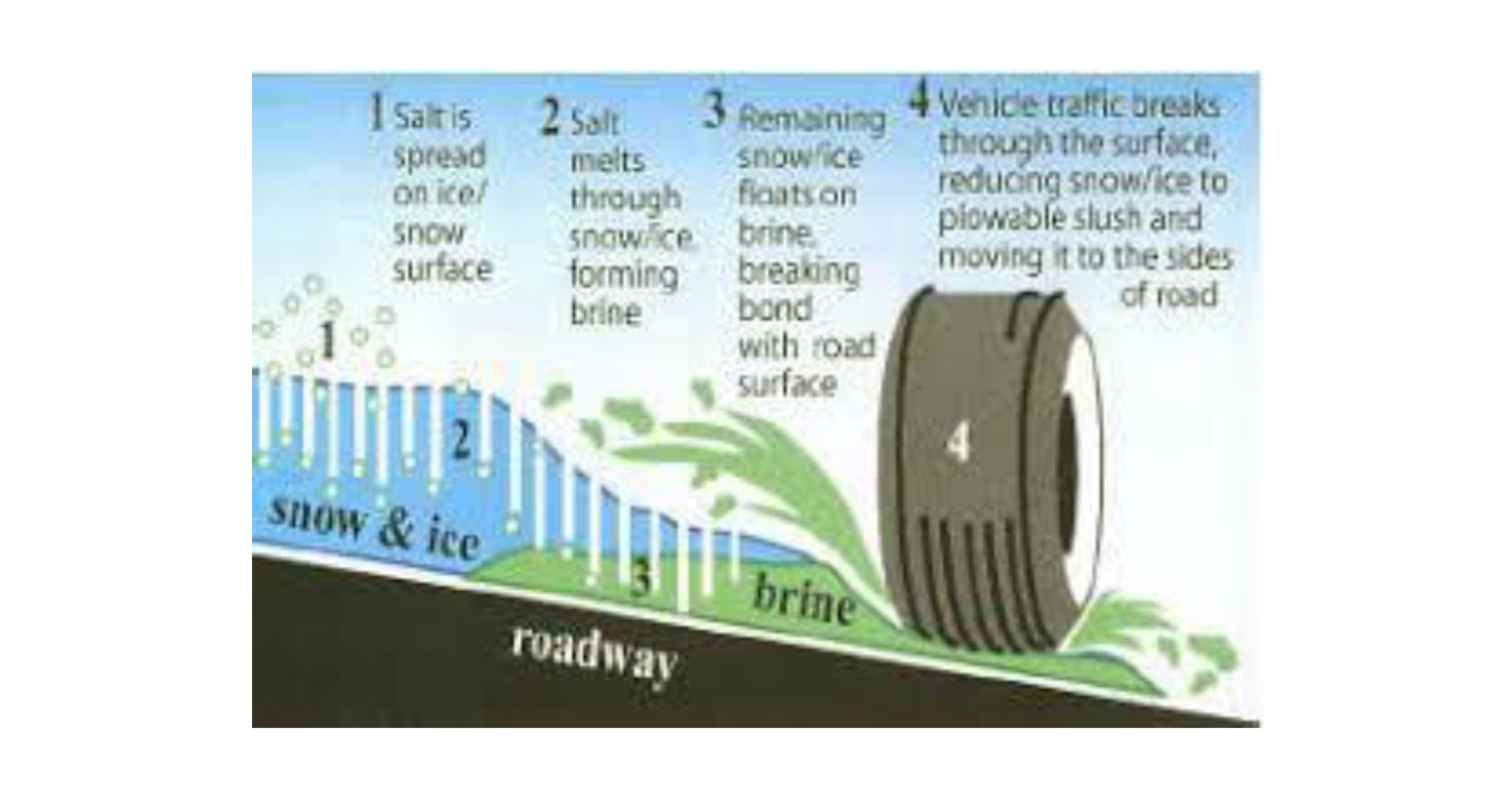
When is Liquid Deicer Applied
-
Liquid deicer is applied at similar times as rock salt. It can be applied after plowing to remove snow and ice residue from plowing operations and it can be applied after a snowfall to melt through accumulated snow and ice.
Challenges Facing Liquid Deicing
-
No evidence of deicer application because there is little to no residue left on the surface
-
Must have advanced understanding of snow and ice management
-
Need detailed ground temp forecasts
-
Salt quality is not consistent
-
Customer are not educated about the service
-
Snow and ice management practices would need to be revised
-
Infrastructure changes are required for the contractor
-
Limited training material is available and what is provided mainly focuses on anti-icing
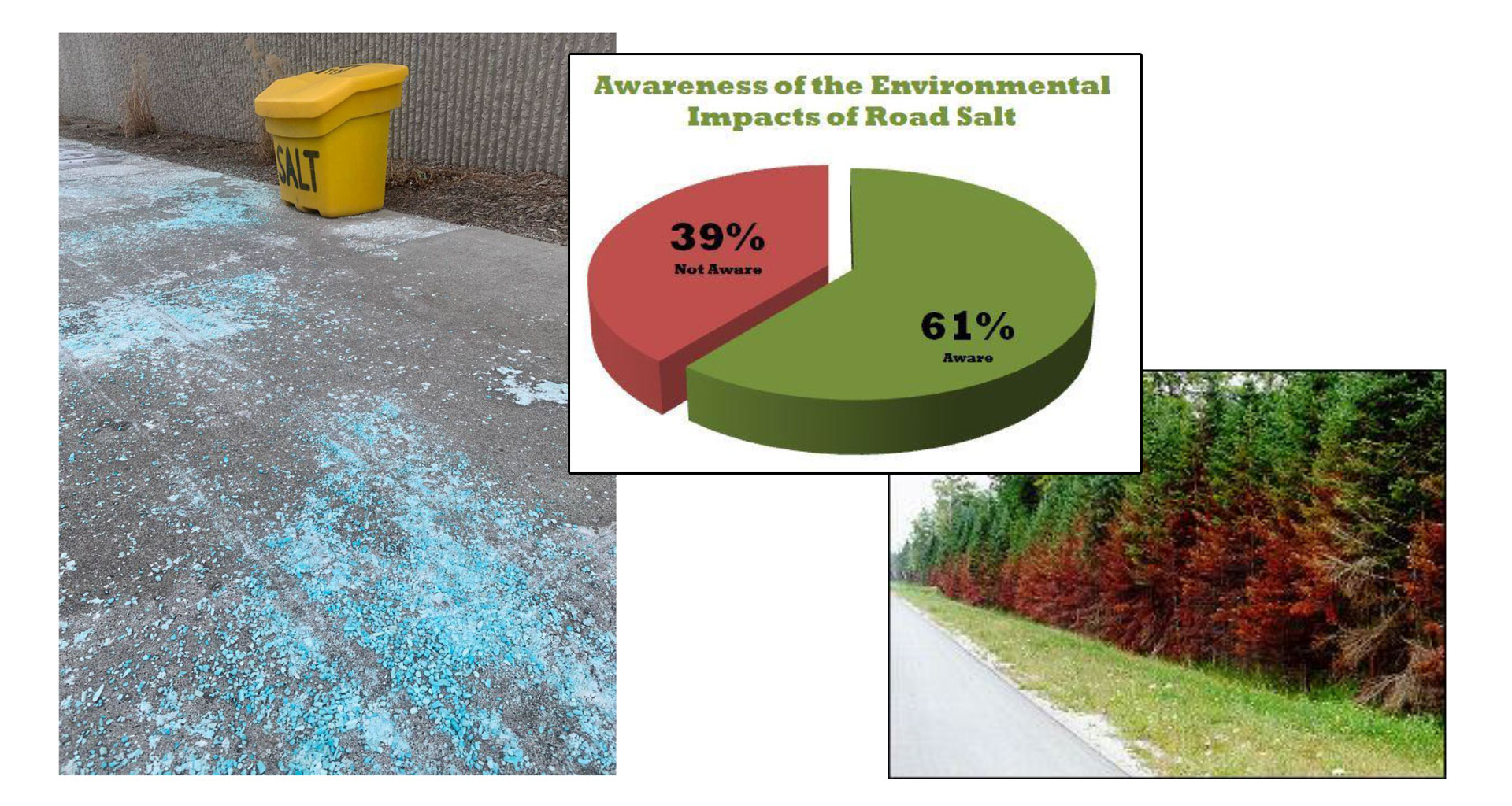
Why Use Liquid Deicer – Environmental Concerns
-
A reduction of 70% of the salt vs dry application
-
Eliminate over application of products
-
Stop killing vegetation around the surfaces that are being maintained for the winter
-
The opportunity to provide a chloride free service for snow and ice management
-
Growing concerns about our deicing methods

Liquid Deice Economic Benefits
-
Melt snow and ice in lower temperatures
-
More consistent level of service through various winter conditions
-
Liquid Deicer does not track into buildings like solid products do, quite a savings for Janitorial services in the winter months
-
Cleaner finish to surfaces after application than solid material
-
More efficient use of labour and equipment
Conclusions
-
The current model of salt application is not sustainable
-
If we want to be market leaders then we have to lead because without leadership we will have legislation
-
Liquid Deicing provides a economic solution to over use of salt while providing for the safe conditions that we have come to expect in the winter

